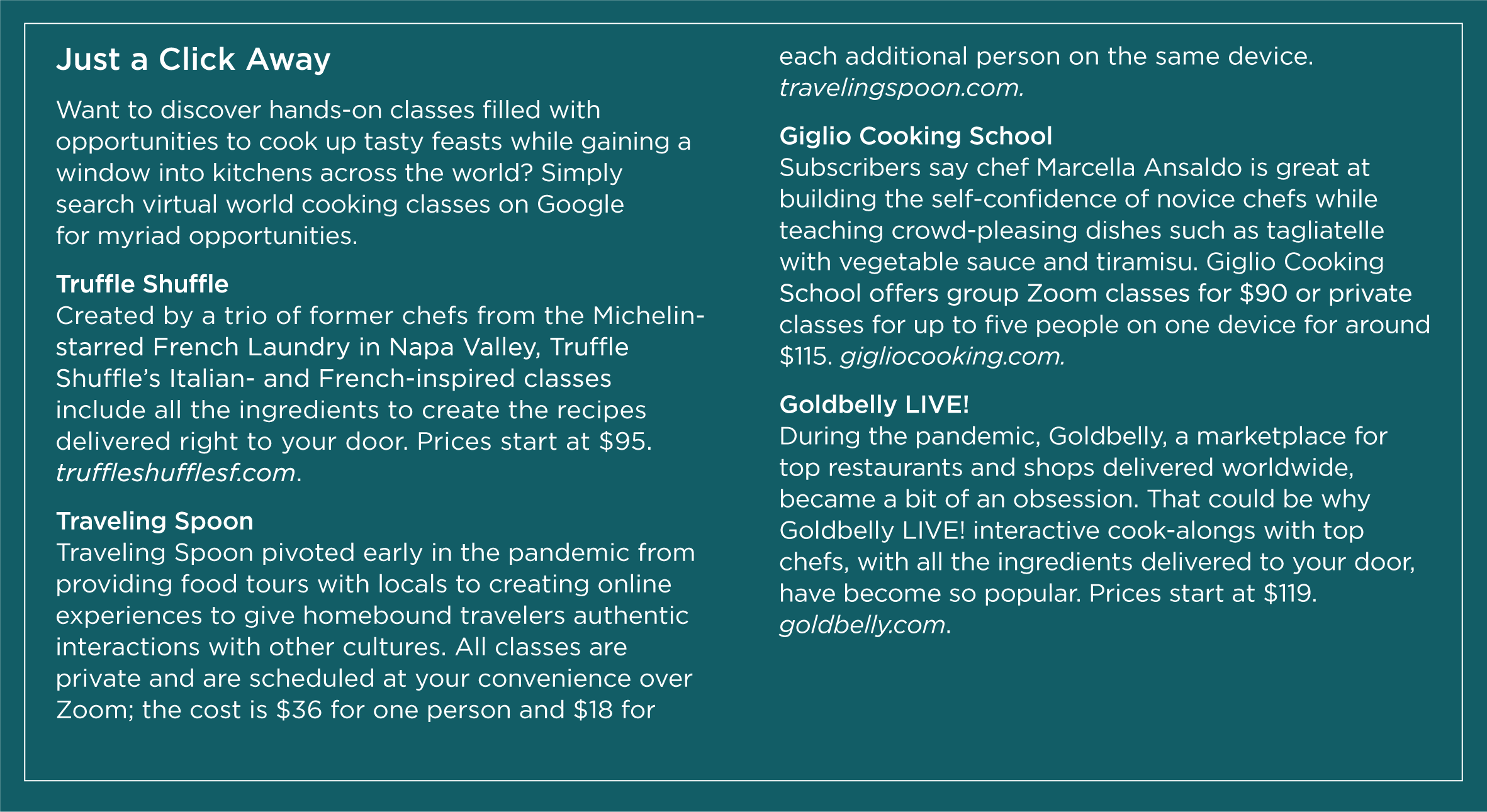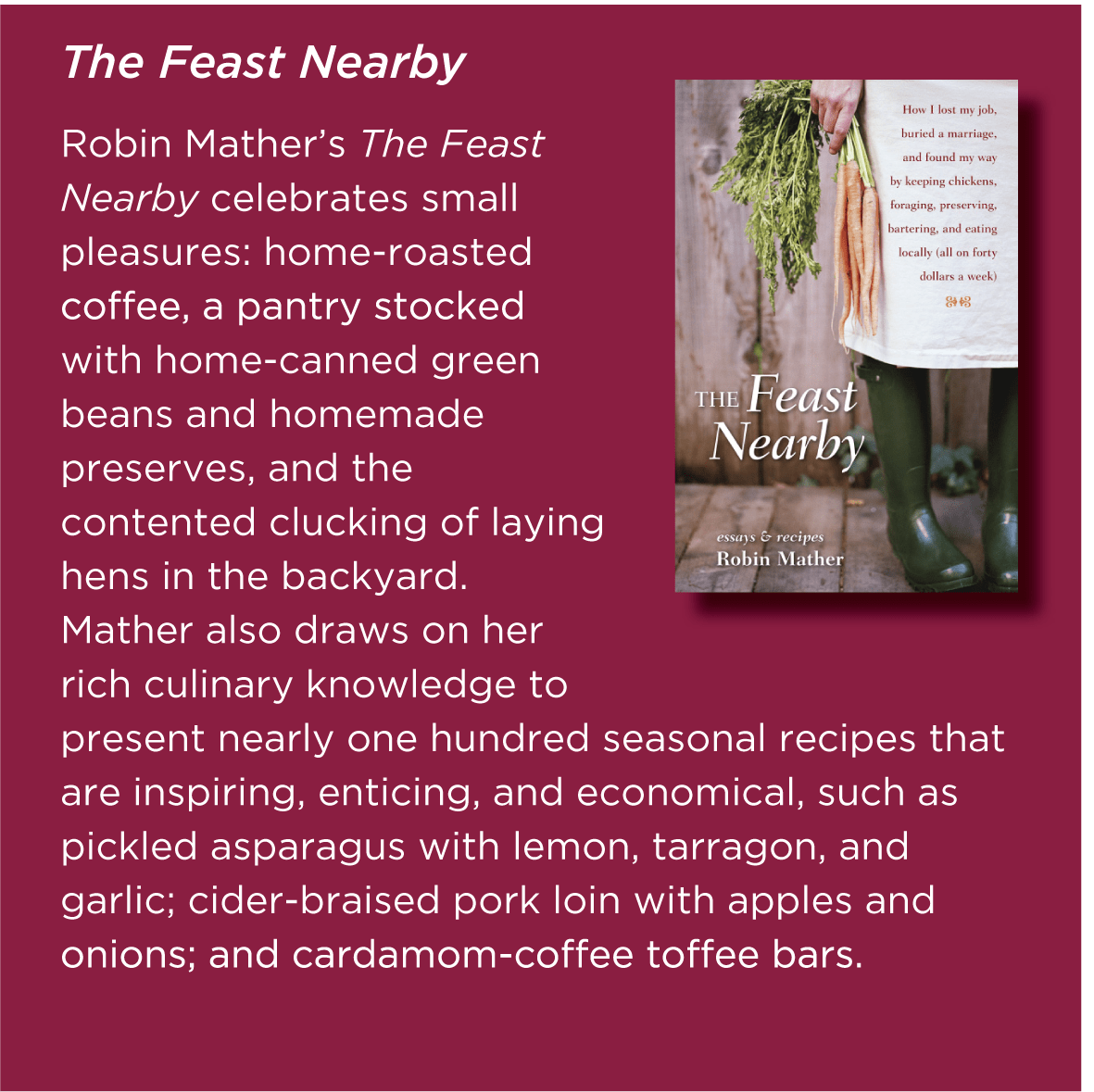A Taste of History
“Food is a key that unlocks everything,” says Robin Mather, a food writer for more than 40 years and author of The Feast Nearby.
“It unlocks the cultures of our neighbors, it unlocks our own history, and it unlocks the history around the world,” Mather says, whose forebears came from Wales to work in the coal mines in Iowa. When she makes Welsh cakes (similar to scones) or cawl (a kind of lamb soup), Mather says she thinks about her family’s journey.
Marcela Curry, of Raleigh, North Carolina, agrees that food is a way to maintain a link to your home and culture.
“For me, because I am an immigrant to this country, it’s a way to stay connected to where I’m from and a great way to stay connected to who I am,” the native of Chile says. “As I’ve gotten older, it’s interesting how being an immigrant has become more important to me,” Curry says.
Adapting to Change
The traditional foods you grew up eating might not be quite the same here as those your family prepared in its country of origin. Don’t be disappointed if you can’t replicate a traditional dish exactly as you had it there.
“Recipes for traditional foods are living things that evolve over time,” Mather says. “You see that in a lot of Italian recipes.” Some of the ingredients they were working with just weren’t available in the U.S., Mather says. For example, mortadella (a cold cut meat mixture) and sausages were nowhere to be found. “The Italian immigrants had to improvise on the spot.”
That would also be true for many African and Asian people, Mather says, who couldn’t find the fruits and vegetables they were familiar with when they came to this country. They had to alter traditional dishes, while others had to change recipes to keep costs down.
“When I was the food editor at The Detroit News, I had a colleague whose grandparents emigrated from Armenia, and as a teen, he lost his mother to breast cancer,” Mather says. “He was desperate to create his mother’s recipe for kibbeh (spiced grain and meat shaped into balls).”
One day, she says, he burst into her office and said, “‘I got it, I got it! I figured it out!’” What he discovered was that his mother couldn’t afford the traditional ground lamb, so she used a mixture of three-quarters ground beef and one-quarter ground lamb. “That was the taste he remembered,” Mather says.
Another consideration is that ingredients might be the same, but the flavor of the dish will be different, Curry says. “Chile is mountainous; volcanic soil is everywhere. The flavors of food are going to be different,” she says. “A cup of milk in the U.S. will taste very different from a cup of milk in Chile,” Curry says.
Beef and pork might have a different taste because of the way the animals were raised and what they were fed. “If you go to the southern part of Chile and you have lamb, you will remember it,” Curry says. “The flavor and the smell of lamb when it’s cooked there is sweet; it’s just divine.”
Explore from Home
If you’re not able to travel, food is the best way to start learning about another culture or country, Curry says.
“I had to teach myself to eat spicy food because I had never had it.” When she got to the U.S., because she spoke Spanish, when Curry went to a Mexican restaurant, people assumed that she knew the food, she says. “I had never had Mexican food before, so I had no idea what the menu was about,” Curry says. “But being exposed to Mexican food made me think, ‘Wow, the world is full of interesting stuff. What other kinds of foods are out there?’”

Exploring cultures through specialty cookbooks is one way to start. However, if you want to prepare a traditional dish, the recipe might call for ingredients that aren’t available locally. Mather recommends turning to online vendors such as Penzeys Spices and The Spice House.
Curry advises checking your television listings.
“On Netflix, Taco Chronicles walks you through the food culture of Mexico.” It’s a fascinating way to learn about Mexican culture, Curry says. “A taco is not just a taco; the filling represents the food that is being grown in that region in Mexico.” TV is rife with shows about food from all corners of the world today: British baking, Asian street food, Mexican asado, and more.
Local festivals are also a good way to explore a culture through cuisine. For example, where Mather lives in Arizona, there is the Tucson Meet Yourself festival. Other local resources you might find helpful could include ethnic and international grocery stores, specialty street markets and food stalls, cooking classes, cultural centers, and neighborhood churches.
Travel to the Source
“If money is no object, I would travel to a place where I could sign up for a series of cooking classes,” Mather says. “Working with someone in the country of your heritage, you’ll get a clear idea of how that food fits into your culture.”
Curry enjoys exploring food when she travels. “I just go and salivate walking through the markets. I’m drawn to the smells when I walk by, and I have discovered some absolutely amazing things,” she says.
If you’re planning a trip, she advises doing a little culinary homework before you go. “Do the research, and it’s not that difficult to figure out what good food is really all about,” Curry says.
And she practices what she preaches. “When I travel for work, I’m notorious for disappearing, and you will find me at a restaurant, hopefully a Chilean or other Latin American restaurant,” Curry says. “The more styles of food you try, the more you understand how your food culture connects to others.”
Making Connections
Food can also be a way to tell your children about family history. Mather advises cooking with kids while telling stories about your parents and grandparents. Talk about the history of the dish, where it originated, and where it’s eaten today. Host a potluck for family, friends, or community and have each person bring a special dish to celebrate their culture. Or use a holiday, birthday, or the anniversary of a loved one’s passing to celebrate their life with a special meal.
Curry says families frequently share their histories and cultures with their communities through food. “Food is a great way to transfer knowledge from one generation to the next and a great way to expose friends to another side of your personality.”
Curry celebrates Chilean Independence Day with her family and friends by making empanadas (baked meat pies) and ensalada chilena (a salad with tomatoes and onions) served with wine from the South American country. Her empanadas have inspired more than one person to visit her homeland.
Go backward, but also sideways and forward, Mather advises. Are you getting to know your own background? Your neighbor’s background? A culture in which you have an interest? No matter what, food is the key that will open any door.
“Whatever your heritage is, eating the foods of that culture can help you connect to that heritage,” Mather says. “And if you’re fortunate enough to have memories of a person who emigrated, it will help you remember that person, as well.”
